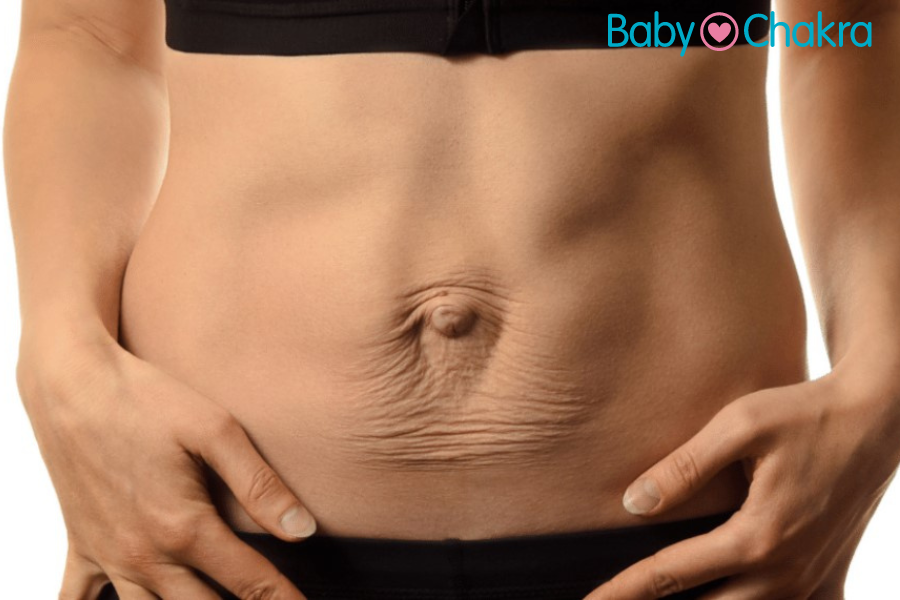
Diastasis Recti: Causes, Symptoms, And Treatment Methods
31 May 2023 | 5 min Read
Sudeshna Chakravarti
Author | 799 Articles
Diastasis recti refers to the separation of your abdominous rectus muscles during pregnancy to make extra room for your baby. While this condition mainly develops during pregnancy, it is usually diagnosed after childbirth, when some women notice an indentation in their belly, right down to their six-pack area.
Read on as we tell you more about this condition, ways to identify it, and treatment methods that help strengthen your core and enable your muscles to rejoin.
Possible Causes Of Diastasis Recti

Diastasis recti occurs in the second or subsequent pregnancies or due to advanced maternal age / Image credit: Freepik
Diastasis recti mainly occurs due to the intra-abdominal pressure created by your growing baby. Also, the increase in the production of pregnancy hormones causes your connective tissue to relax, which further leads to the separation of your muscles.
While this condition usually develops during the later stages of pregnancy, the second stage of labour, along with pushing could also contribute to the separation of your abdominal muscles.
Apart from this, some of the other factors that likely increase the risk of diastasis recti during or after pregnancy include:
- Advanced maternal age (more than 35 years old)
- Subsequent pregnancies
- Having twins or triplets
- The mother having a small structure but carrying a larger than average baby
- Family history of diastasis recti
- Poor abdominal tone before pregnancy
When Exactly Do You Experience Diastasis Recti?
You may develop diastasis recti during or after the 35th week of pregnancy. However, this condition is only diagnosed after pregnancy and remains up to six weeks of postpartum.
The space created between your abdominal muscles usually shrinks after eight weeks of giving birth. However, in some cases, an overly wide gap may remain from months to years after delivery. If your abdominal gap doesn’t reduce on its own after six months postpartum, you may need medical treatment.
Common Signs Of Diastasis Recti
The most common symptoms of diastasis recti include:
- Physical discomfort in your abdomen
- Noticing a bulge in the middle of your abdomen
- Hip and lower back pain
- Poor posture
- Constipation or bloating after eating
Other Ways Of Determining Diastasis Recti
Here are a few other ways to identify abdominal separation after pregnancy.
- Lie down on your back with your knees bent and feet on the floor.
- Place one hand over your belly with your fingers pointing toward your toes.
- Lift your head while bringing your chin to the chest. Now, slowly press your fingers onto your belly button.
- As your abs contract, check if your fingers fit in the gap between your muscles.
- If you feel a separation of two fingers, chances are you have diastasis recti.
You can also visit a physical therapist, who can check this condition using a caliper tool or an ultrasound. These devices give more accurate results.
Treatment Of Diastasis Recti

Start with gentle exercises and avoid planks or crunches as they widen the gap between your abdominal muscles / Image credit: Freepik
Diastasis recti is not considered a serious health concern. You can easily manage this condition with certain measures and exercises. We have discussed a few measures that you should keep in mind to help resolve this condition.
- Avoid strenuous activities like lifting heavy objects as they could strain your connective tissues even more. Also, sitting and standing frequently may strain your tissue as you lift your body multiple times while doing so.
- Make sure to exercise with caution and avoid crunches, sit-ups, planks, and push-ups as they aggravate abdominal separation.
- Do pelvic core-strengthening and pelvic floor exercises to reduce the gap between your abdominal muscles.
If your diastasis recti is severe and the above-mentioned steps don’t work, your doctor may recommend surgery as the next option. The surgery is usually done laparoscopically and involves stitching back your along the mid-line.
Can Diastasis Recti Lead To Other Health Conditions?
The gap between your abdominal muscles could also lead to problems such as:
- Pelvic and back pain
- Reduced stability and mobility of your torso
- Changes in your body’s posture
- Pelvic muscle dysfunction
- In rare cases, hernia
Conclusion
Diastasis recti may occur due to the pressure created by your growing baby and the release of pregnancy hormones that relax your abdominal muscles. You may experience this condition if you have multiples, have advanced age, or have a poor abdominal tone.
In case you identify diastasis recti after pregnancy, do consult your healthcare provider as they can recommend you the right exercises to help regain your core strength. You should also avoid strenuous activities as they increase the strain on your muscles and may widen the gap.
Recommended Baby Care Products:
Also Read:
Postpartum constipation: We have discussed useful remedies to help deal with postpartum constipation and ways to enhance your metabolism. Take a look.
First period after c-section: When can you expect your first period after a c-section? Tap this post to know.
Ovulation symptoms: Track the most fertile days of the month with these ovulation symptoms.
Cover Image Credit: AlphineTherapy.com
A


Related Topics for you
Suggestions offered by doctors on BabyChakra are of advisory nature i.e., for educational and informational purposes only. Content posted on, created for, or compiled by BabyChakra is not intended or designed to replace your doctor's independent judgment about any symptom, condition, or the appropriateness or risks of a procedure or treatment for a given person.



